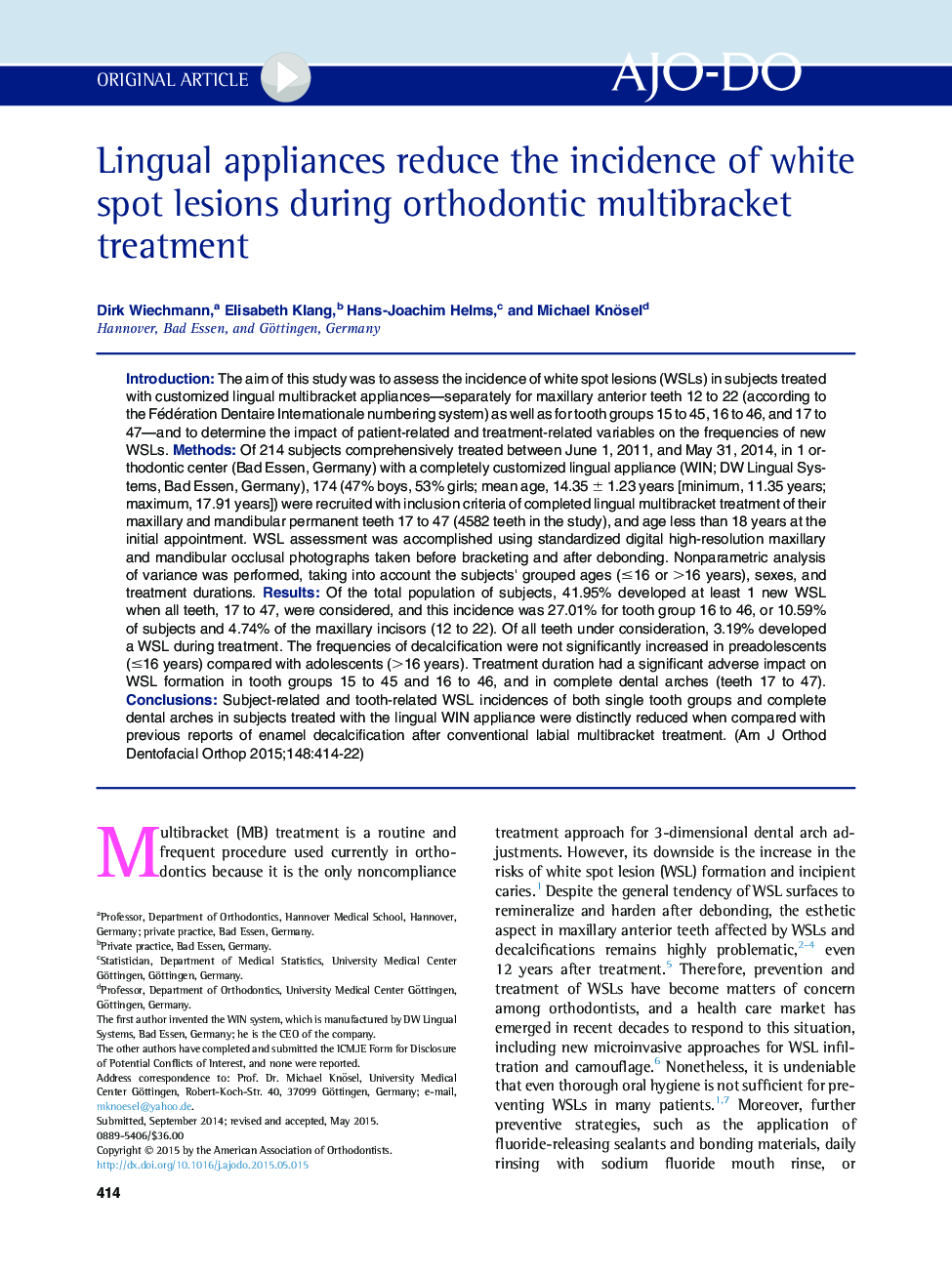| Article ID | Journal | Published Year | Pages | File Type |
|---|---|---|---|---|
| 3115449 | American Journal of Orthodontics and Dentofacial Orthopedics | 2015 | 9 Pages |
•Preventing enamel demineralization and incipient caries is critical in orthodontics.•White spot lesions (WSLs) occur in up to 73% of labial multibracket treatments.•We assessed WSLs in 174 subjects treated with customized lingual multibrackets.•Patients with the lingual brackets had distinctively fewer WSLs than patients with labial brackets.
IntroductionThe aim of this study was to assess the incidence of white spot lesions (WSLs) in subjects treated with customized lingual multibracket appliances—separately for maxillary anterior teeth 12 to 22 (according to the Fédération Dentaire Internationale numbering system) as well as for tooth groups 15 to 45, 16 to 46, and 17 to 47—and to determine the impact of patient-related and treatment-related variables on the frequencies of new WSLs.MethodsOf 214 subjects comprehensively treated between June 1, 2011, and May 31, 2014, in 1 orthodontic center (Bad Essen, Germany) with a completely customized lingual appliance (WIN; DW Lingual Systems, Bad Essen, Germany), 174 (47% boys, 53% girls; mean age, 14.35 ± 1.23 years [minimum, 11.35 years; maximum, 17.91 years]) were recruited with inclusion criteria of completed lingual multibracket treatment of their maxillary and mandibular permanent teeth 17 to 47 (4582 teeth in the study), and age less than 18 years at the initial appointment. WSL assessment was accomplished using standardized digital high-resolution maxillary and mandibular occlusal photographs taken before bracketing and after debonding. Nonparametric analysis of variance was performed, taking into account the subjects' grouped ages (≤16 or >16 years), sexes, and treatment durations.ResultsOf the total population of subjects, 41.95% developed at least 1 new WSL when all teeth, 17 to 47, were considered, and this incidence was 27.01% for tooth group 16 to 46, or 10.59% of subjects and 4.74% of the maxillary incisors (12 to 22). Of all teeth under consideration, 3.19% developed a WSL during treatment. The frequencies of decalcification were not significantly increased in preadolescents (≤16 years) compared with adolescents (>16 years). Treatment duration had a significant adverse impact on WSL formation in tooth groups 15 to 45 and 16 to 46, and in complete dental arches (teeth 17 to 47).ConclusionsSubject-related and tooth-related WSL incidences of both single tooth groups and complete dental arches in subjects treated with the lingual WIN appliance were distinctly reduced when compared with previous reports of enamel decalcification after conventional labial multibracket treatment.
